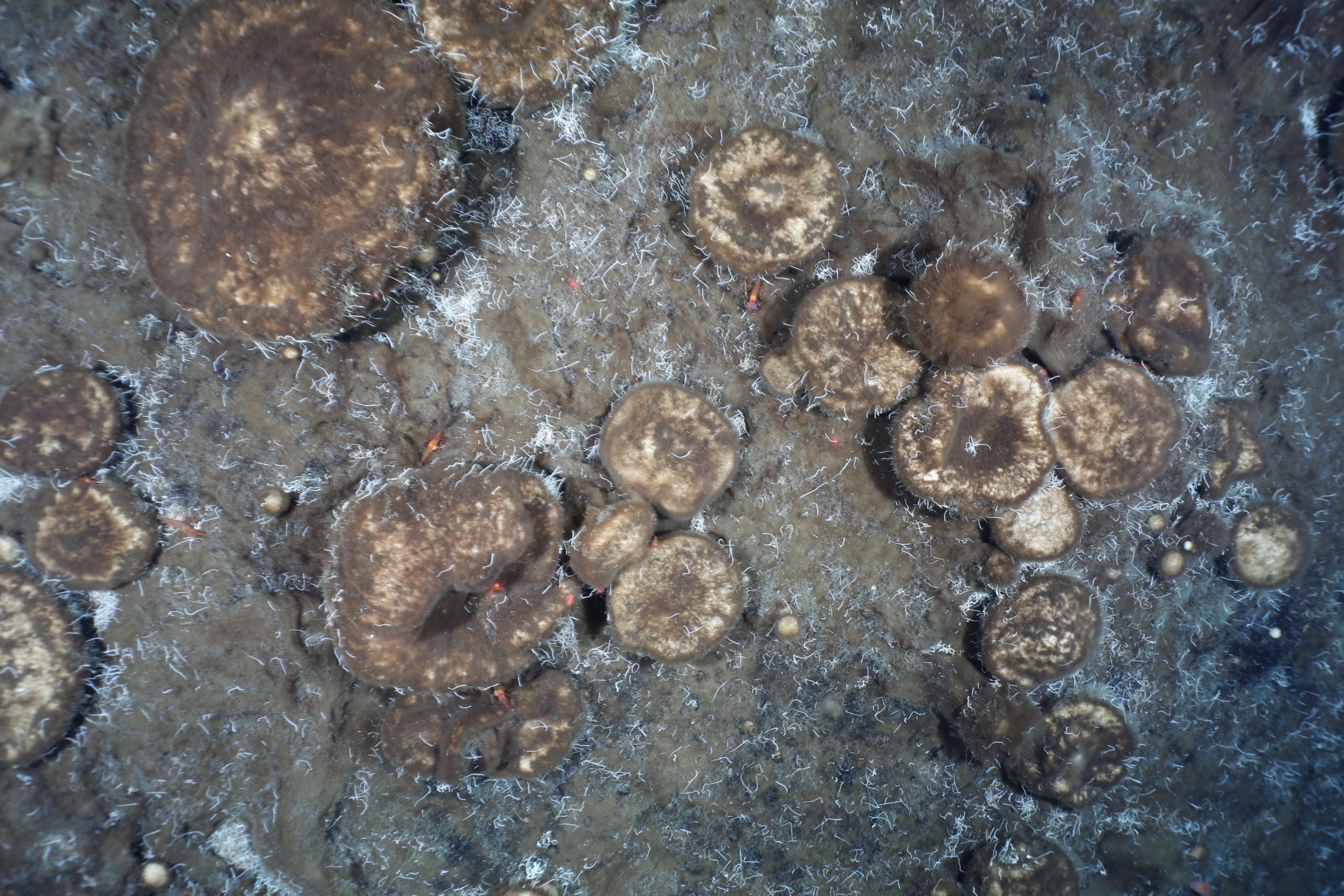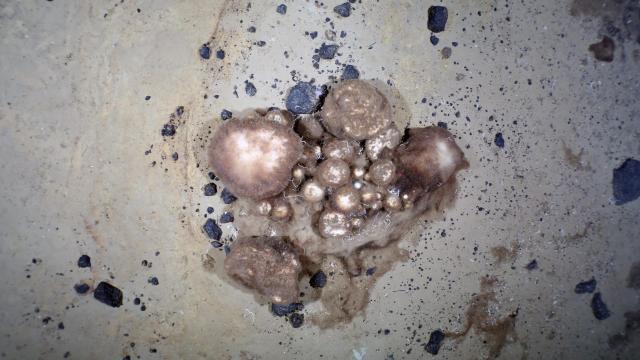Researchers have discovered a vast garden of giant sponges living close to the North Pole. It might seem like nothing could survive in the cold, dark depths of the Arctic Ocean, but these porous animals have come up with a unique source of nutrients: the bodies of their long-dead marine neighbours.
A team of scientists with the Max Planck Institute for Marine Microbiology in Germany published their findings on the sponges in Nature Communications. The sponges were found a few hundred kilometers from the North Pole, sitting at an ocean depth of around 500 to 800 metres. The sponge gardens were atop an underwater mountain range called the Langseth Ridge, which is comprised of long-extinct volcanoes.

“This area is permanently ice-covered, the nutrients and food in the water column can barely sustain any deep sea life form,” Teresa Morganti, the study’s first author and sponge expert at the Max Planck Institute, wrote in an email.
Sponges are simple organisms and one of the most common forms of ocean life, able to live in all types of marine environments. Most sponges are filter feeders: As water passes through them, they strain out plankton, bacteria, and other stuff to eat. But for these sponges living in the inhospitable Arctic, usual food sources are few and far between, as the ice-covered ocean is just too extreme to sustain many forms of life. When the team of scientists first discovered the sponges, they were not sure what, exactly, they were feeding on, so they took samples back to their labs to analyse.
It turns out that these sponges — which are, on average, 300 years old — were making do with what was available to them: namely, the long-dead corpses of the ecosystem that once thrived on the active volcanoes thousands of years ago. When the Langseth volcanoes were active, tube worms formed colonies around them, feeding on the sulphur escaping from the vents. Researchers observed traces of long-gone tube colonies among the sponges, but no living colonies. Instead, they were able to figure out that the sponges were using the old organic matter from the worms as nutrients, enabling them to thrive in a place where food is otherwise scarce.

“What is new and exciting about these discoveries is that it has never [been] observed before that, in the most nutrient poor environment, such as in the ice-covered Arctic deep sea, such a rich community can develop,” Morganti said. “It is amazing how sponges can form an ecosystem that rely on detrital material from an extinct community, how they can select beneficial bacterial partners.”
Thanks to climate change, the Arctic is warming rapidly, which will have consequences all over the world — and likely could bring changes to the sponges’ habitat. “With sea ice retreat, we will have more light for algae to grow, but the melting sea ice freshens the surface and increases stratification, thus depleting nutrients,” Antje Boetius, who was the chief scientist of the expedition and is the head of the Research Group for Deep Sea Ecology and Technology at the Max Planck Institute, said in an email.
Boetius pointed out the lack of protected marine areas in the Central Arctic, which were previously considered unnecessary due to how covered the ocean is in ice. Over the long term, an increasingly sea-ice-free Arctic means that lack of protection could become an issue, as fisheries, shipping, and other human activities increase. “We need a concept for protecting Arctic ecosystems,” she said.
While the destruction of corals has gained worldwide attention, the study’s authors hope that sponges, equally vital organisms to ocean ecosystems, get more research as well.
“There is so much that we do not know about the organisms that live in our ocean,” Boetius said.
